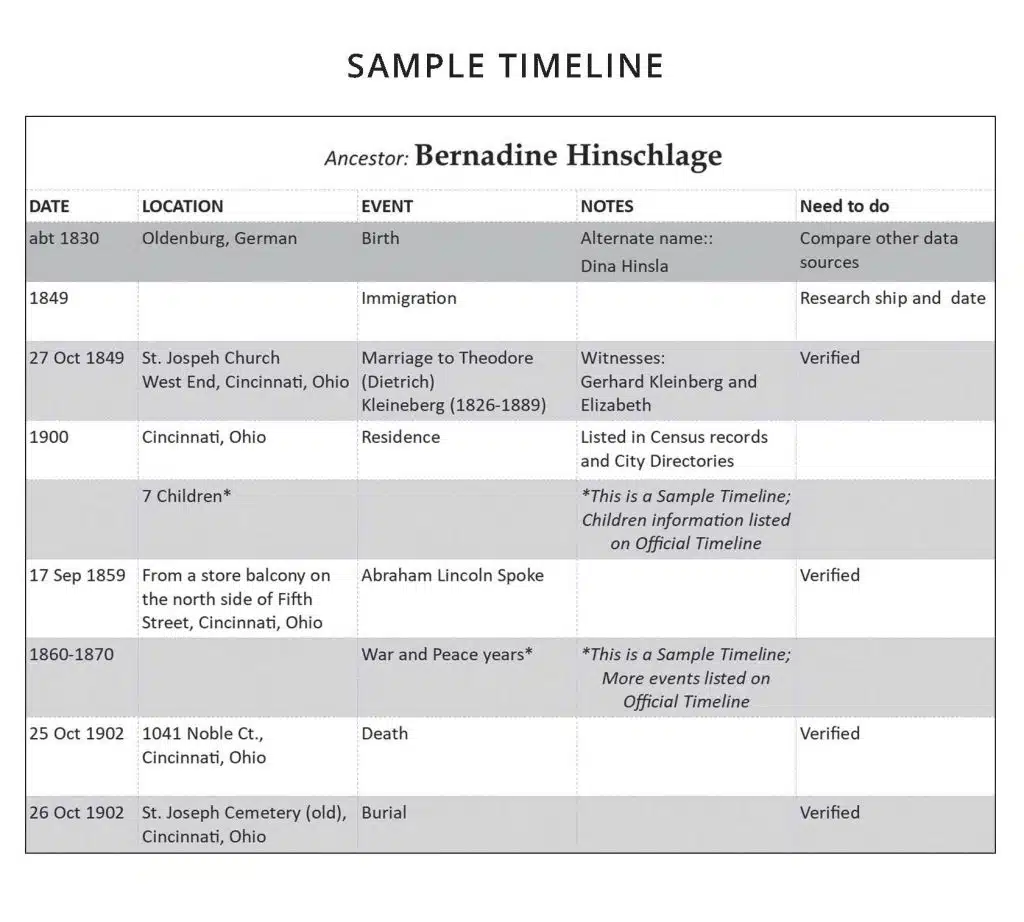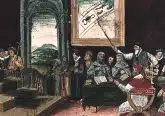Why and How to Create a Genealogy Timeline
We’ve researched where to find birth, baptismal and death certificates, census documents and other records. Now, let’s organize the data into a genealogical timeline!
WHY A FAMILY HISTORY TIMELINE?
It is an important research tool that can aid in the where, when and why of our ancestors’ lives. The timeline helps identify research inconsistencies, such as dates of birth, marriage and death. It enables one to step back and view the work with a new perspective. Creating a family history timeline for each ancestor deepens our understanding of each person and family branch researched.
THREE TIMELINE TYPES FOR GENEALOGY RESEARCH
Basic: The most common: It includes birth, marriage(s), death, spouse(s), residence(s), and land transactions. It can narrow down where events took place, identify discrepancies and evaluate large time gaps that require further research.
Comparative: Answers the questions of identity: There may be inconsistencies in name changes or spellings, use of an alias or a same-name individual appearing in an unlikely location. Tracing and comparing each identity help determine if it’s the same person.
Historical: Incorporates historical events: It identifies additional research opportunities. For example, a mother and her children may have lived with her parents while her husband was away at war.
HOW TO CREATE A GENEALOGY TIMELINE
A well-constructed timeline organizes a chart of events to provide a valuable overview of your ancestor’s life. It includes
marriages, children’s births, parents’ deaths, military service and other important dates. Adding relevant historical events to the timeline reveals the impact of social, political and economical circumstances.
To create an effective timeline, expensive software and special skills are not needed, just curiosity and creative investigation. Handwritten timelines are beneficial for solving problems and summarizing research. Digital ancestral timelines are best for works in progress, particularly for inserting images into the document. Spreadsheet timelines help to sort and filter data.
MAKE A TIMELINE IN FOUR STEPS
- Create a blank chart to use as a template for multiple
- Fill in the ancestor’s life events; the research notes are needed here.
- Record the person’s name at the top of the
- Record the ancestor’s date of birth (actual or estimated) in the chart’s second or third row.
- List events chronologically, skipping one or several lines to allow room for future entries.
An individual’s events include birth, baptism, census enumerations, marriage(s), land transfers, tax assessments, religious memberships (e.g., Catholic Life Insurance), military service, immigration, city directory listings, divorce(s), pensions, death and burial.
Perhaps, expand the family circle by beginning the timeline with the parents’ names and marriage date. Since a parent’s death may generate valuable records, include it in the timeline. For challenging research problems, add entries for court documents, deeds or newspaper notices with the names of neighbors or friends who were witnesses or bondsmen.
3. Discover how ancestors fit into the world around them and how that might have affected them. Choose events that seem most relevant to the ancestor’s life and help define an era. This could include the War of 1812, the Civil War, pandemics, the discovery of gold in California and boundary changes, such as the proximity to their parish and schools and the construction of roads, canals and railroads throughout their state. (Boundary changes could affect where records are found.)
4. An immigrant ancestor’s timeline includes events from both their homeland and new residence in America, such as religious persecution, crop failures, jobs and
It is recommended that after you save your digital timelines, print or upload them to a cloud-based service. This keeps them available while you continue filling in research gaps at libraries, archives, cemeteries and places where your ancestors lived.
NEXT UP: Using Newspapers to Find Your Ancestors
 Ruthy Trusler is a communication consultant with a passion for genealogy. For over 20 years, she has helped families document their ancestry and write their family legacies
Ruthy Trusler is a communication consultant with a passion for genealogy. For over 20 years, she has helped families document their ancestry and write their family legacies
This article appeared in the August 2024 edition of The Catholic Telegraph Magazine. For your complimentary subscription, click here.















